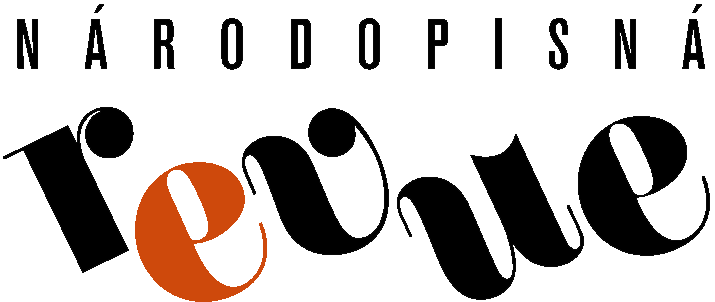Journal of Ethnology 4/2012 with its thematic studies pays attention to the issues relating to the aesthetics of folklore. Juraj Hamar in its contribution (Folklore from the Point of View of Aesthetic Categories) summarizes the issue of aesthetic categories and folklore. Marta Ulrychová focuses on the analysis of demonological legends in the Bohemian Forest in selected works by German authors in the 1920s. (Demonological Legends from the Northern Part of Královský hvozd (Royal Forest) / Waldhwozd ). Miroslava Záhumenská explains the collection of folk literature in Slovakia in the late-19th century (Folk Song Manuscript Collection Assembled by Ján Klempa Jacovský in Relation to Literary and Aesthetic Criteria of the Last Third of the 19th Century). In Other Studies Section, Eva Románková presents a new project of the National Institute of Folk Culture (Ethnological Terminology and Methodology of Compiling a Bilingual Dictionary of Ethnology) and Jarmila Teturová submits the knowledge obtained in a field research aimed at the development of folk tradition (Male Dance “Verbuňk” in the Village of Žatčany in the Region of Brněnsko within the Contemporary Cultural and Social Context).
Transferring Tradition column publishes a feuilleton by Josef Holcman, who contemplates the contemporary social recession on the ground of this year’s selected folklore festivals and local ethno-cultural traditions; and an article by Alena Schauerová, which is devoted to a glance into the history of the children’s folklore festival in Strážnice. Social Chronicle remembers the anniversaries of writer Josef Holcman (born 1952), Luděk Štěpán (born 1932), an expert for the protection of folk architecture, and Eva Davidová (born 1932), a specialist for Roma studies. Moreover, the Journal includes regular reports from the branch, conferences, exhibitions, and reviews of new books.
Folklore from the Point of View of Aesthetic Categories
In the last decades, a lot of scientific disciplines have dealt rather with the folklore poetics than the folklore aesthetics. Such ideas were represented especially by literary scientists, ethnologists, linguists, and philosophers from the environment of the Prague Linguistics Circle, the Russian formalists and the Tartu School. In folklore, the presence of antique aesthetic tradition has been evident until today. The aesthetics of folklore is based on the archetype essence of folk art, which is symptomatic especially for literary folklore. For example, the space, the characters, the stories etc. dispose of predestined trajectories that are forming the entire theme and action and the topics and metaphoric of the story, the place, the characters, and their behaviour. This is similar to the aesthetic categories in folklore. Within folk environment, the aesthetic function plays an important role when the facts are adopted through cognition and feelings of beauty. Nowadays, folklore is losing the natural conditions of its existence, which directly endangers the syncretism nature of folk art.
Demonological Legends from the Northern Part of Královský hvozd (Royal Forest) / Waldhwozd
The author devotes herself to the legends from Královský hvozd, an area situated in the northernmost part of the Bohemian Forest. In the 1920s, the legends were published by Gustav Jungbauer and Hans Watzlik - the German-writing authors from Bohemia. In her geographic definition of the area, the author is referring to the Josef Blau publication titled Geschichte der künnischen Freibauern im Böhmerwalde from 1934. Her typology of legends is based on the catalogue of demonological legends, which is a part of the thesis defended by Jan Luffer at Department of Ethnology, Faculty of Arts of Charles University, in 2011. The principal part of the study is divided into six groups defined by Luffer. The author tries to compare the collected materials with the particular types that are signed with a title and a three-digit code in the catalogue. She applies the same way when analyzing Stilzel der Kobold des Böhmerwaldes by Watzlik. She is reaching a view that the most types, defined by Luffer, are represented in the legends from Královský hvozd. The legends from this part of the Bohemian Forest relate to rural culture. They express the value system of descendants from the then Bavarian settlers. Plentifully represented are the motifs related to deep forests (poaching, casting of magic balls, and meeting with a danger creature, storms, and natural disasters) and provincial border between Bohemia and Bavaria.
Folk Song Manuscript Collection Assembled by Ján Klempa Jacovský in Relation to Literary and Aesthetic Criteria of the Last Third of the 19th Century
The study pays attention to the manuscript collection assembled by Ján Klempa Jacovský, which came into being in the last third of the 19th century. It consists of two volumes, the first of which contains 95 song texts and the other one contains up to 127 song texts. A part of Jancovský´s records was published in 1880 in the book titled Písně slovenské (The Slovakian Songs), edited by Andrej Halaša. The manuscript collection as a whole is an important proof for the contemporary work of those who collect and record the texts of Slovakian folk songs. It also documents the repertoire from the area around the town of Trnava, to which not much attention has been paid so far. In his manuscript, Ján Klempa Jacovský refers to an older collection compiled by Ján Kollár. As resulting from his comments, Jacovský knew the Kollár´s work very well, resp. he worked with it and compared the recorded song texts. Although Ján Klempa Jacovský recorded the texts of folk songs without their melodies, his collection’s historic value is inestimable for us today. Even if the text of a folk song, i.e. a fragment of the song’s original, is recorded, such a record bears witness about the simultaneous relation to folk songs and their aesthetical and artistic value.
Ethnological Terminology and Methodology of Compiling a Bilingual Dictionary of Ethnology
The development of different scientific fields has brought about the formation of specialized vocabularies or terminologies whose aim is to standardise the designations of things, activities and processes in the individual branches. Today, many researchers study literature in foreign languages or publish their work abroad; almost every academic journal contains summaries in English. Ethnology is a very specific field, as it covers all areas of human life and its terminology is highly culture dependent. When translating ethnological texts into English, we encounter many problems. The expressions for elements of traditional material, spiritual and social culture in different countries vary in the same way as their cultural and social background does. No specialized Czech-English dictionary of ethnology has been published so far. The National Institute of Folk Culture is planning to publish such handbook in the form of an online database which will include a wide range of linguistic, semantic and encyclopaedic data. An examination of the identified needs and available resources followed with a presentation of the working methods as well as the methodology formulation including the dictionary structure, selection of headwords and analysis of problematic issues in translation, are summarised in this study and should lay the groundwork of the dictionary project.
Male Dance “Verbuňk” in the village of v Žatčany in the Region of Brněnsko within the Contemporary Cultural and Social Context
The study has developed in connection with this year’s field research project of the National Institute of Folk Culture, which focused on the extension of Slovak verbuňk outside the original region of its occurrence. The study describes different localities, in which verbuňk occurs, putting stress on the area south of Brno. The attention is paid to the village of Žatčany and to the description of verbuňk occurrence in this locality within the context of its cultural and social development. The study explains the importance of folklore movement for the safeguarding, renewal and development of folk culture. Verbuňk is observed as a cultural phenomenon with respect to the contemporary dance culture, dance opportunities, changes in dance order and reconstruction of folk costumes from the mid-20th century until today.



